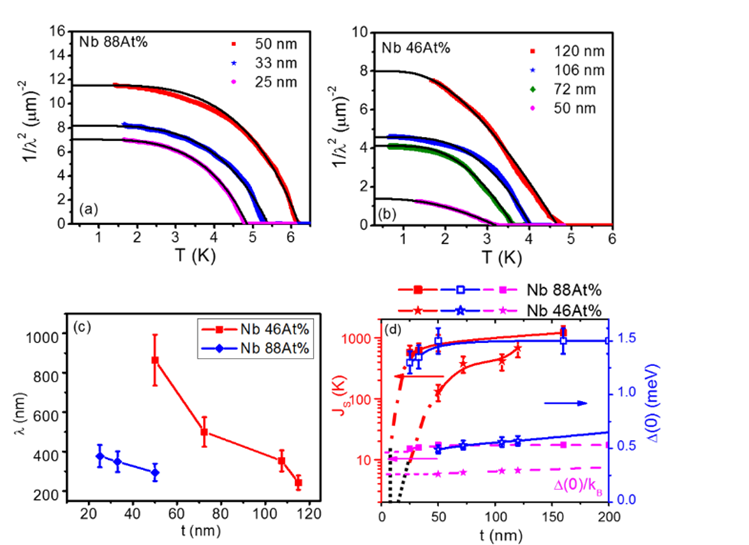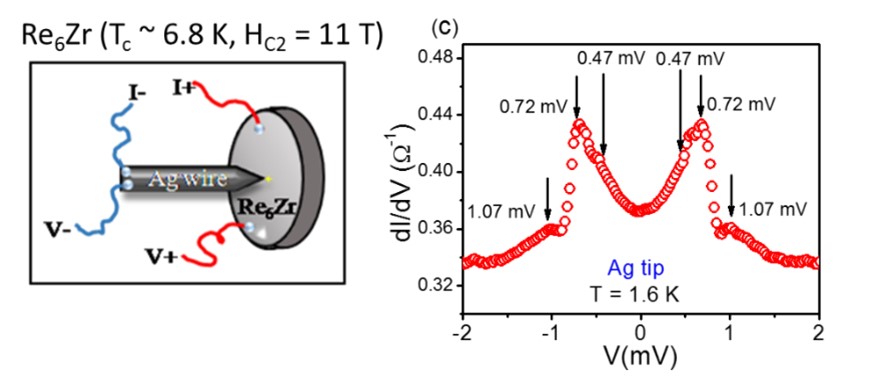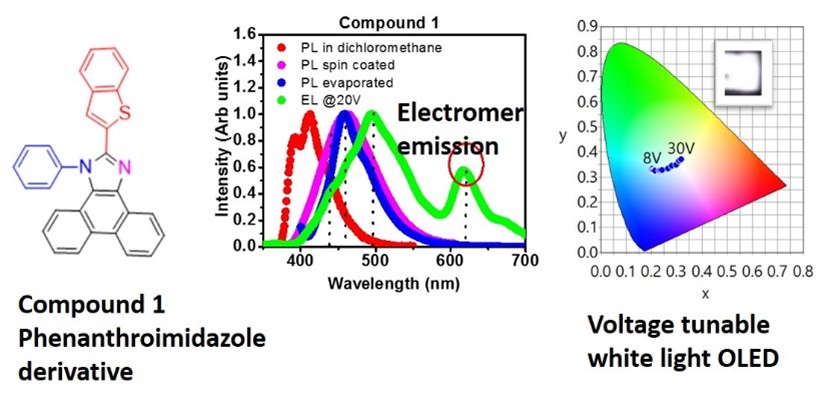



Associate Professor
Publications
Group Members

SRF

SRF

JRF

JRF

JRF

(JRF- SERB Project)
Research
https://sangitabose.wixsite.com/equest-lab
Theme of the Lab:
The central theme of the lab concerns with the study of bulk and surface electronic properties of quantum materials where the emphasis has been on meso-scopic superconductors. Using specialized developed in-house experimental techniques like soft-point contact spectroscopy and low frequency electrodynamic measurements, probing the superconducting order parameter symmetry, understanding the pairing mechanisms and other classical and exotic phenomena like BKT phase transitions, quantum phase transitions, vortex matching effects in conventional, novel and artificially engineered superconductors and thin films has been the focus of the lab.
Another direction of work for the lab lies at the interface of Physics and Chemistry which is to understand the physics of organic electronic devices. From fabrication to characterization of organic devices like OLEDs, Solar Cells and OFETs, the aim has been to use transport based spectroscopic tools and optical spectroscopy to understand the working of them which we believe help in improving their performance.
Few of the past projects are:
A. Projects on Superconductivity
A.1 Probing the role of phase fluctuations in 3D Nb-Cu nanocomposite thin films by magnetic penetration depth studies
Understanding the mechanism of superconductivity in 3D nano-composite films (nano-composites of normal metals and superconductors) has been an important problem since the past decade. In these materials, there could be competing mechanisms of quantum size effects, proximity effect and phase fluctuations (PF). PF can be quantitatively estimated by measuring the superfluid stiffness in conjunction with the measurement of the superconducting energy gap. However, PF has not been probed substantially in 3D nano-composite films. Superconductivity in 3D Nb-Cu nanocomposite granular films have been studied with varying thickness for two different compositions, Nb rich with 88At% of Nb and Cu rich with 46At% of Nb. For both compositions, the superconducting transition temperature (Tc) decreases with decreasing film thickness. For any thickness, doubling the Cu content in the films decreases the Tc by about 2 K. To explore if PF play any role in superconductivity in these 3D films, the superfluid stiffness (JS) of the films was estimated by measuring the penetration depth of the films using low frequency electrodynamic measurements (Note: Js ∝ 1/2). JS or 1/2 was seen to decrease with decreasing film thickness and increasing Cu content. However, for all films studied JS remained higher than the superconducting energy gap indicating that PF do not play any role in superconductivity in the film thickness and composition range investigated (unlike that observed in the 2D limit). Our results indicate that an interplay of quantum size effects (QSE) and superconducting proximity effect (SPE) controls the Tc with composition in these 3D nano-composite films.
be quantitatively estimated by measuring the superfluid stiffness in conjunction with the measurement of the superconducting energy gap. However, PF has not been probed substantially in 3D nano-composite films. Superconductivity in 3D Nb-Cu nanocomposite granular films have been studied with varying thickness for two different compositions, Nb rich with 88At% of Nb and Cu rich with 46At% of Nb. For both compositions, the superconducting transition temperature (Tc) decreases with decreasing film thickness. For any thickness, doubling the Cu content in the films decreases the Tc by about 2 K. To explore if PF play any role in superconductivity in these 3D films, the superfluid stiffness (JS) of the films was estimated by measuring the penetration depth of the films using low frequency electrodynamic measurements (Note: Js ∝ 1/2). JS or 1/2 was seen to decrease with decreasing film thickness and increasing Cu content. However, for all films studied JS remained higher than the superconducting energy gap indicating that PF do not play any role in superconductivity in the film thickness and composition range investigated (unlike that observed in the 2D limit). Our results indicate that an interplay of quantum size effects (QSE) and superconducting proximity effect (SPE) controls the Tc with composition in these 3D nano-composite films.
Reprint: Scientific Reports 10, 18331 (2020)
A.2. Superconductivity in non-centro symmetric superconductor Re6Zr
 |
Figure 2: The left panel shows the schematic of the technique of point contact Andreev reflection (PCAR) spectroscopy on a single crystal of Re6Zr. The right panel shows a representative PCAR spectra showing multiple peaks. |
i) In recent times, non-centrosymmetric superconductors (NCS) have attracted considerable interest owing to the complex nature of superconductivity in these materials. In the NCS, where the crystal structure lacks a centre of inversion symmetry the superconducting order parameter is characterized by a mixture of spin-singlet spin-triplet states. Despite numerous theoretical predictions, experimental evidence of spin-singlet spin-triplet mixing in NCS has been surprisingly few. A mixed singlet-triplet gap function could result in two strongly anisotropic gap functions which would ideally be the experimental signature of unconventional pairing. Point Contact Andreev Reflection (PCAR) spectroscopy was done on a high-quality single crystal of Re6Zr which showed multiple gap features. From our experiments two possible interpretations emerged. One possibility was that the bulk gap is the triplet gap which mixes with spin singlet surface gaps. The other possibility is that all gaps are isotropic and the gaps originate from different Fermi sheets with the presence of strong inter-band scattering. Both models based on our experimental observations can explain unconventional superconductivity of Re6Zr [1].
ii) To further validate the above models, thin films of Re6Zr were grown by pulsed laser deposition. Surprisingly, all films down to 2 nm thick were amorphous in nature showing conventional s-wave superconductivity [2] giving a new amorphous superconductor a-Re6Zr. The variation in the superconducting transition temperature, Tc with film thickness in these a-Re6Zr films could be understood on the basis of the Finkelstein model, incorporating electron-electron corelations with increase in disorder in the films.
 |
Figure 3: The top panel shows the AFM images of amorphous thin films of Re6Zr of different thickness. The lower left panel shows the variation of Tc with film thickness and the right panel shows the variation of superconducting energy gap, D and superfluid stiffness, Js with film thickness. |
Reprints: [1] Scientific Reports, 9 (2498), 1-9 (2019)
[2] Journal of Alloys and Compounds 877, 160258 (2021)
B. Projects on Organic Electronic devices
B.1 Voltage tunable white light generation from combined emission of monomer and electromer in phenanthroimidazole based OLED
In recent times there have been a large number of new and interesting ways in which white light emission from small molecule-based OLEDs have been demonstrated. However, there are very few reports which show good color purity with OLEDs with a single emissive layer. The device properties of two Phenanthroimidazole derivatives- one having benzothieinyl (1) and the other having pyridyl (2) moiety at the C2 position of the imidazole ring have been investigated. In OLEDs of compound 1, voltage tunable white light emission is observed originating from combined electromer and monomer emission. This was established through a careful characterization of the devices which provided a new insight to characterizing devices to track the origin of white emission from an electromer.
 |
Figure 4: Left panel shows the structure of compound 1 which is a phenanthroimidazole derivative showing electromer emission in the OLED devices (as seen from the electroluminescence (EL) spectra in the middle panel). The right panel shows the CIE plot of the OLED device showing voltage tunable white light emission. |
Reprints: Journal of Photochemistry and Photobiology A: Chemistry, 113922 (2022).
Scientific Collaborations
Courses Taught
Past Lab Members
External Links
UM-DAE Centre for Excellence in Basic Sciences
Nalanda Building, University of Mumbai, Vidyanagari, Mumbai 400098, India.
NEST/Outreach:+9186570 26481
NEST/Admissions:+9186570 26482
General Enquiries: info@cbs.ac.in
Admissions Queries:admissions@cbs.ac.in
Web: https://cbs.ac.in